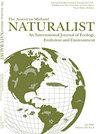Two Trophic Upsurges With Differing Responses During the Filling of a Mid-Continental Reservoir (Mozingo Studies III)
IF 0.6
4区 环境科学与生态学
Q4 Agricultural and Biological Sciences
引用次数: 0
Abstract
Abstract. Mozingo Lake was sampled monthly for 4 y following its impoundment in order to further understand trophic upsurges and to refine the classic model of upsurges. Upsurge 1 occurred in Month 8, when lake area increased by 184% and inundated only floodplain with comparable coverages of forest, cropland, and grassland (30%–33% each). At this time nitrate increased dramatically and was related to both precipitation and lake area increase, likely due to ammonia-based fertilizers from the flooded cropland. Phytoplankton biovolume remained low, however, likely due to the abundance of Daphnia and other zooplankton grazers. After recovery, the lake expanded dramatically again in Month 21 (Upsurge 2); lake area increased by 36%, but this expansion flooded land with less floodplain (23%) and with different proportions of land use (45% grassland, 31% forest, 14% cropland). Upsurge 2 experienced initial increases in nitrate and zooplankton, but these were minor compared to Upsurge 1, and phytoplankton remained low. These initial responses were followed by substantial increases in phosphate, which related to lake area increase; cyanobacteria biovolume expanded, but zooplankton abundance declined. Therefore the two upsurges were driven by different factors: nitrate in Upsurge 1, but phosphate in Upsurge 2. These drivers, in turn, may reflect differences in the newly-flooded land, including differences in land use and in landscape position (i.e., slope). In addition to seasonal succession, the phytoplankton of Mozingo Lake exhibited longer-term primary succession that related first to nitrate, then to grazing, then to multiple factors, suggesting increases in food web complexity. In contrast to the classic model of upsurges, the biotic responses in Mozingo Lake were quite transitory, and the nature of the upsurges varied with the characteristics of the newly-inundated land. Therefore, it appears that trophic upsurge is more variable than the classic model suggests.中大陆水库蓄水过程中两次不同反应的营养高潮(Mozingo研究III)
摘要Mozingo湖蓄水后4年内每月进行一次采样,以进一步了解营养上升趋势,并完善经典的上升趋势模型。第1次高潮发生在第8个月,当时湖泊面积增加了184%,仅淹没了森林、农田和草原覆盖率相当的泛滥平原(各30%–33%)。此时,硝酸盐急剧增加,这与降水和湖泊面积的增加有关,可能是由于被洪水淹没的农田中的氨基肥料。然而,浮游植物的生物量仍然很低,可能是由于水蚤和其他浮游食草动物的丰富。恢复后,湖泊在第21个月再次急剧扩张(Upshund 2);湖泊面积增加了36%,但这种扩张淹没了泛滥平原较少(23%)、土地利用比例不同(45%为草地,31%为森林,14%为农田)的土地。上游2号最初经历了硝酸盐和浮游动物的增加,但与上游1号相比,这些增加很小,浮游植物仍然很低。在这些最初的反应之后,磷酸盐显著增加,这与湖泊面积的增加有关;蓝藻生物量增加,但浮游动物丰度下降。因此,这两次上升是由不同的因素驱动的:上升1中的硝酸盐,但上升2中的磷酸盐。反过来,这些驱动因素可能反映了新淹没土地的差异,包括土地利用和景观位置(即坡度)的差异。除了季节性演替外,莫津戈湖的浮游植物还表现出长期的初级演替,首先与硝酸盐有关,然后与放牧有关,然后又与多种因素有关,这表明食物网的复杂性增加。与经典的涌浪模型相比,莫津戈湖的生物反应是短暂的,涌浪的性质随着新淹没土地的特征而变化。因此,营养高潮似乎比经典模型所暗示的更具可变性。
本文章由计算机程序翻译,如有差异,请以英文原文为准。
求助全文
约1分钟内获得全文
求助全文
来源期刊

American Midland Naturalist
环境科学-生态学
CiteScore
1.20
自引率
0.00%
发文量
38
审稿时长
18-36 weeks
期刊介绍:
The American Midland Naturalist has been published for 90 years by the University of Notre Dame. The connotations of Midland and Naturalist have broadened and its geographic coverage now includes North America with occasional articles from other continents. The old image of naturalist has changed and the journal publishes what Charles Elton aptly termed "scientific natural history" including field and experimental biology. Its significance and breadth of coverage are evident in that the American Midland Naturalist is among the most frequently cited journals in publications on ecology, mammalogy, herpetology, ornithology, ichthyology, parasitology, aquatic and invertebrate biology and other biological disciplines.
 求助内容:
求助内容: 应助结果提醒方式:
应助结果提醒方式:


